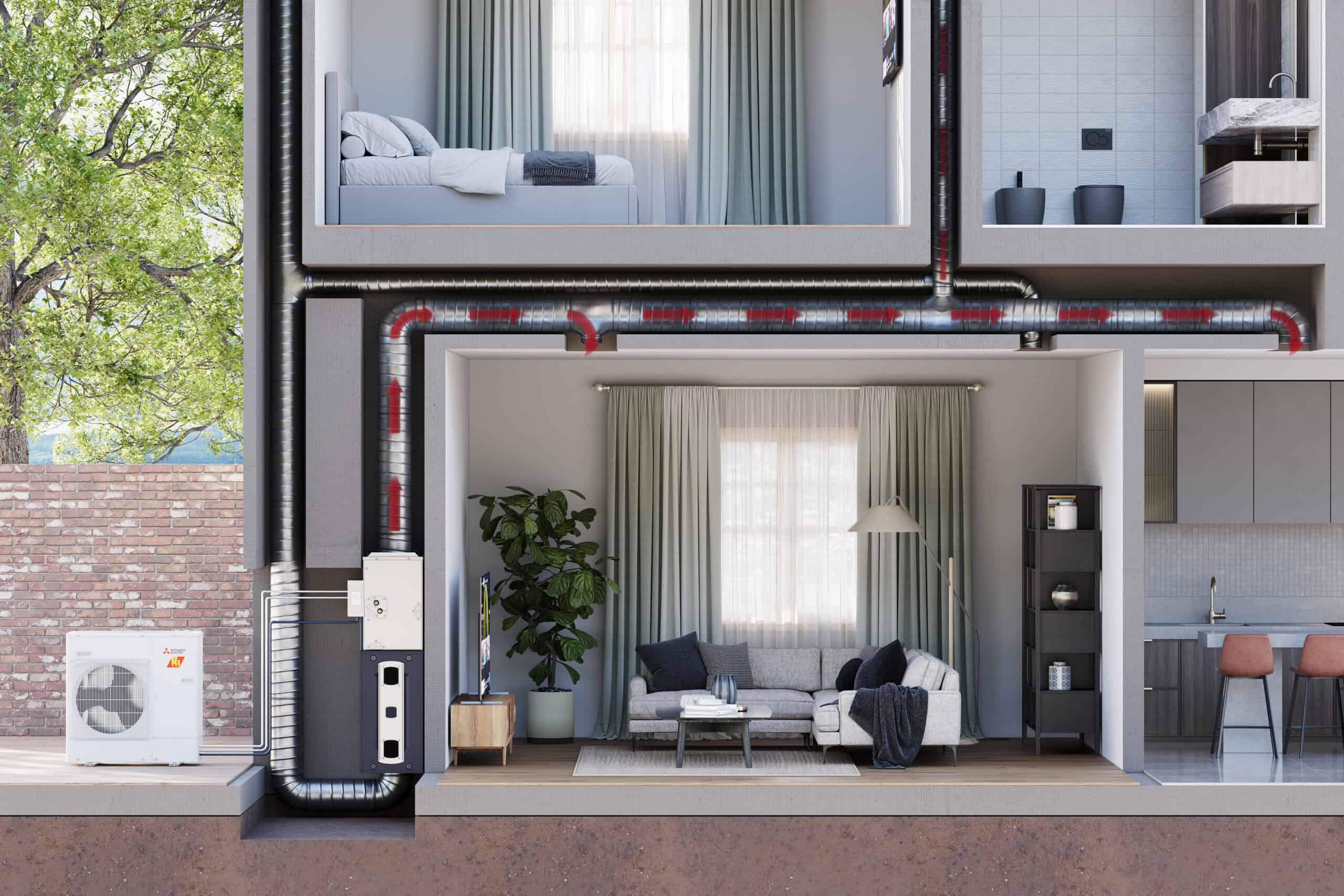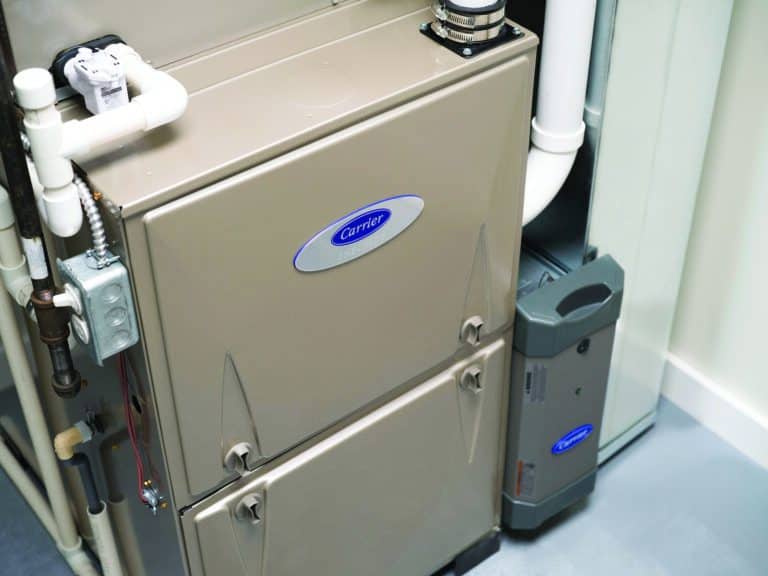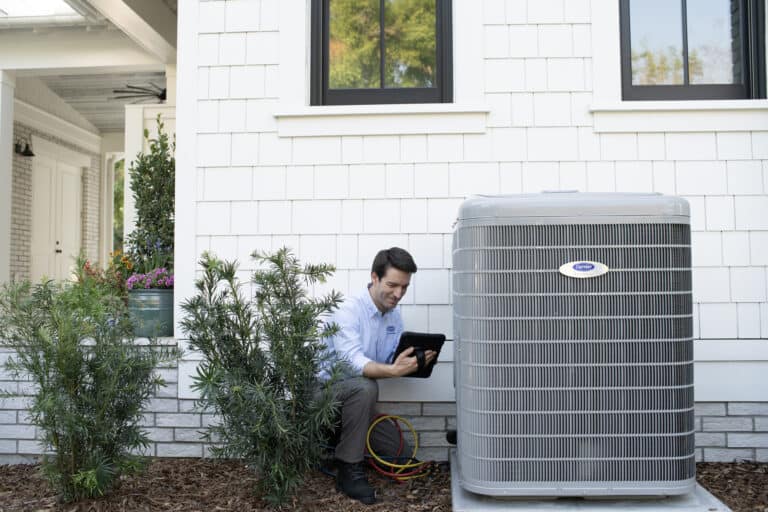
Heat pumps have surged in popularity as an efficient alternative to traditional furnaces and air conditioners – but do they actually make your home more comfortable? The short answer from experts: Yes. Modern heat pump systems, especially advanced variable-speed models, can improve indoor comfort by maintaining more consistent temperatures, reducing drafts, and even operating more quietly.
In this article, we’ll explain exactly how heat pumps achieve a more even climate, why your ductwork also matters for comfort, and compare single-stage vs. two-stage vs. variable-speed heat pumps. We’ll also tackle common homeowner concerns about noise, cold weather performance, costs, and installation. By the end, you’ll understand if a heat pump could be the key to a cozier home – and what to consider before making the switch.
One of the biggest comfort upgrades a heat pump (particularly a variable-speed heat pump) offers is a more even and consistent indoor temperature. Traditional HVAC systems often allow noticeable temperature swings – you might feel too warm right after the furnace runs, then a chill before it cycles on again. Heat pumps with modern controls are designed to minimize these swings.
Conventional single-stage heating/cooling systems operate like a simple on/off switch – they blast on at full power until the thermostat setting is reached, then shut off completely. This all-or-nothing approach tends to overshoot and undershoot the target temperature. For example, a single-stage furnace might heat a room a couple degrees above the thermostat setpoint before turning off, then let it drop a few degrees below before kicking in again. The result is a rollercoaster of warmth followed by coolness. Even two-stage systems (which have a “low” and “high” setting) even out the extremes only somewhat – they still cycle off once the setpoint is met, leading to some degree of up-and-down fluctuation in room temperature.

According to Carrier, a leading manufacturer, single-speed systems often “turn on at full blast… then shut off when the temperature is met,” repeatedly cycling with “up and down temperature swings.”
Homeowners notice this as certain rooms getting hot spots and cold spots or feeling warm right after the heat runs and chilly just before it fires again.
In contrast, variable-speed heat pumps (also called modulating or inverter-driven heat pumps) can run almost continuously at precisely the level of heating or cooling needed at any given moment. Instead of a binary on/off, the compressor and fans speed up or slow down in fine increments to hold the temperature near your setpoint. Think of it like cruise control for your home’s climate. Because the system can adjust output in small steps (some models in as little as 1% increments), it avoids the big blasts and long pauses of older systems.
Variable-speed technology “modulates the speed of the compressor to match the [home’s] load,” meaning the unit runs nearly continuously at the minimum power needed to maintain the set temperature. By doing so, a variable-speed heat pump can keep your indoor temperature within a very tight range – often within about 1°F of the thermostat setting at all times. This level of precision simply isn’t possible with older on/off systems.
The National Renewable Energy Laboratory (NREL) confirms that this strategy of continuous, low-power operation “provides consistent comfort… over traditional single-speed HVAC systems, which cycle… causing higher fluctuations in indoor air temperature.”

In practical terms, that means no more hot-cold yo-yo effect. The air coming out of the vents is steadier and gentler. Rooms all around the house stay at more uniform temperatures. Many homeowners immediately feel the difference – it’s just comfortable everywhere, all the time. In a 2024 field study of homes that upgraded to variable-speed heat pumps, residents reported “the temperature is consistent throughout the whole home” and that it’s the first time their system could “keep the same temperature throughout the home.” In short, heat pumps (especially variable-speed models) absolutely can improve comfort by creating a more even and stable indoor climate than older heating or cooling equipment.
What about humidity? As a bonus, running longer at lower power not only stabilizes temperature, it can improve humidity control in summer. Longer cooling cycles pull more moisture out of the air, helping your home feel less clammy. Many variable-speed systems are optimized for this in “comfort mode,” moving air a bit slower to remove extra humidity. The result is a cooler and drier feel at the same temperature, boosting comfort further.
While the heat pump itself can deliver more consistent heating and cooling, your ductwork – the network of air ducts in your home – plays a huge role in whether that comfort actually reaches every room. It’s important to acknowledge that even the best heat pump won’t perform well if your ductwork is poorly designed or leaky. In fact, bad ductwork can outright negate many comfort improvements.
Leaky or Poorly Designed Ducts: Most American homes lose a surprising amount of heating/cooling through leaky ducts. According to ENERGY STAR, about 20%–30% of the air moving through a typical duct system is lost through holes, gaps, and poorly connected ducts. When a significant fraction of warm air never makes it to the rooms (or cold air in summer escapes into the attic), you get uneven temperatures – some rooms may remain chilly or stuffy despite the system running. Likewise, if ducts are undersized or poorly routed, certain areas of the house might be starved of airflow. No matter how consistent the heat pump tries to keep the air, you’ll still feel hot and cold spots if the duct distribution is flawed.
Why Ductwork Is Hard to Change: Unfortunately, fixing or upgrading ductwork in an existing home can be a difficult and expensive challenge. Ducts are often hidden in walls, ceilings, or crawlspaces. Enlarging or rerouting them might require major demolition or remodeling. In many older homes, there simply isn’t space to add new ducts or chases without significant construction. As a result, homeowners and contractors often have to work with the ducts that are already there. Basic improvements like sealing obvious leaks or adding insulation to ducts in unheated spaces can help. But completely redesigning a bad duct system is usually not practical unless you’re doing a major renovation. It’s a classic case of “you play the hand you’re dealt” – and many older homes were dealt a poor hand when it comes to ductwork design.
Ductless Mini-Splits as an Alternative: If your home’s ducts are beyond help (or you have no ducts at all), one solution is to go ductless. Ductless mini-split heat pumps deliver heating and cooling through compact indoor units mounted on walls or ceilings, each serving a zone or room. Because they don’t rely on ducts to distribute air, they eliminate the duct losses and balance issues entirely. This can be a game-changer for homes with chronic duct problems. In fact, EnergyStar notes that mini-split heat pumps are ideal for “older homes with no existing ductwork” or any home where extending or fixing ducts is difficult. By placing a small heat pump unit directly in the areas that need conditioning, you get targeted comfort with no leaky ducts in between. Many homeowners in historic houses (that used radiators or baseboard heat) choose ductless systems when adding AC or supplemental heat, for this very reason.
In summary, heat pumps can improve comfort, but only if the warm (or cool) air actually reaches you. Sealing and optimizing your ductwork is key to getting the full comfort benefit. And if that’s not feasible, considering a ductless heat pump system for troublesome areas is a smart workaround. An experienced installer will always evaluate your ducts as part of a heat pump upgrade, since there’s little point in installing a great new system if the ducts will choke its performance.
Modern heat pumps deliver a clear upgrade in home comfort through more consistent, gentle temperature control and improved efficiency. While advanced systems—especially variable-speed models—minimize the burstiness of traditional HVAC, their performance still hinges on the quality of your ductwork. For homes with duct issues, ductless mini-splits offer a compelling alternative. In Colorado’s challenging climate, investing in the right heat pump, expertly installed by UniColorado, can transform your indoor experience into one of true, balanced comfort.
